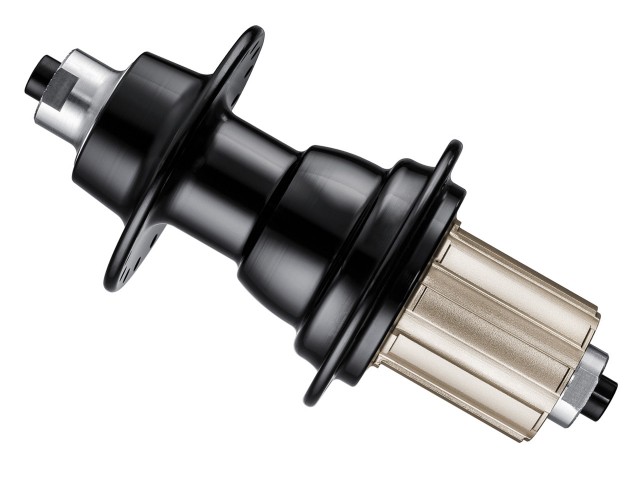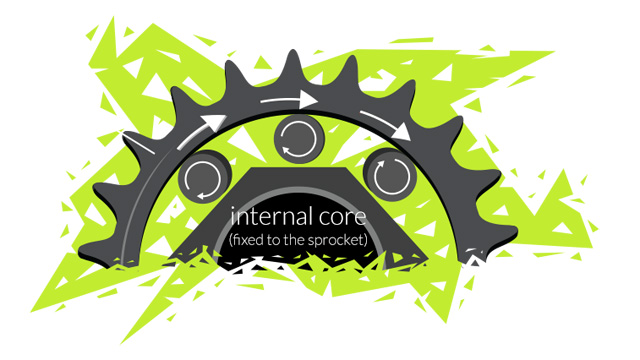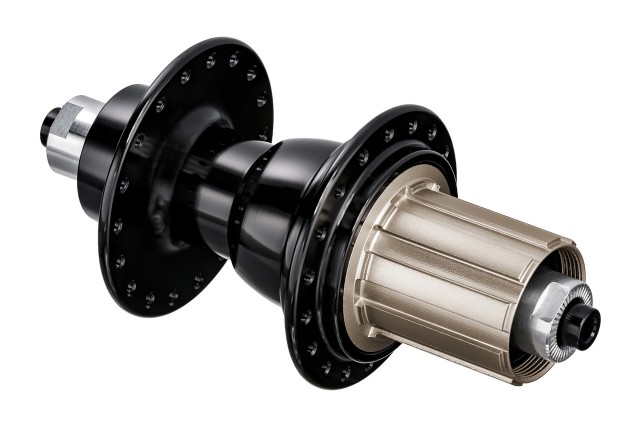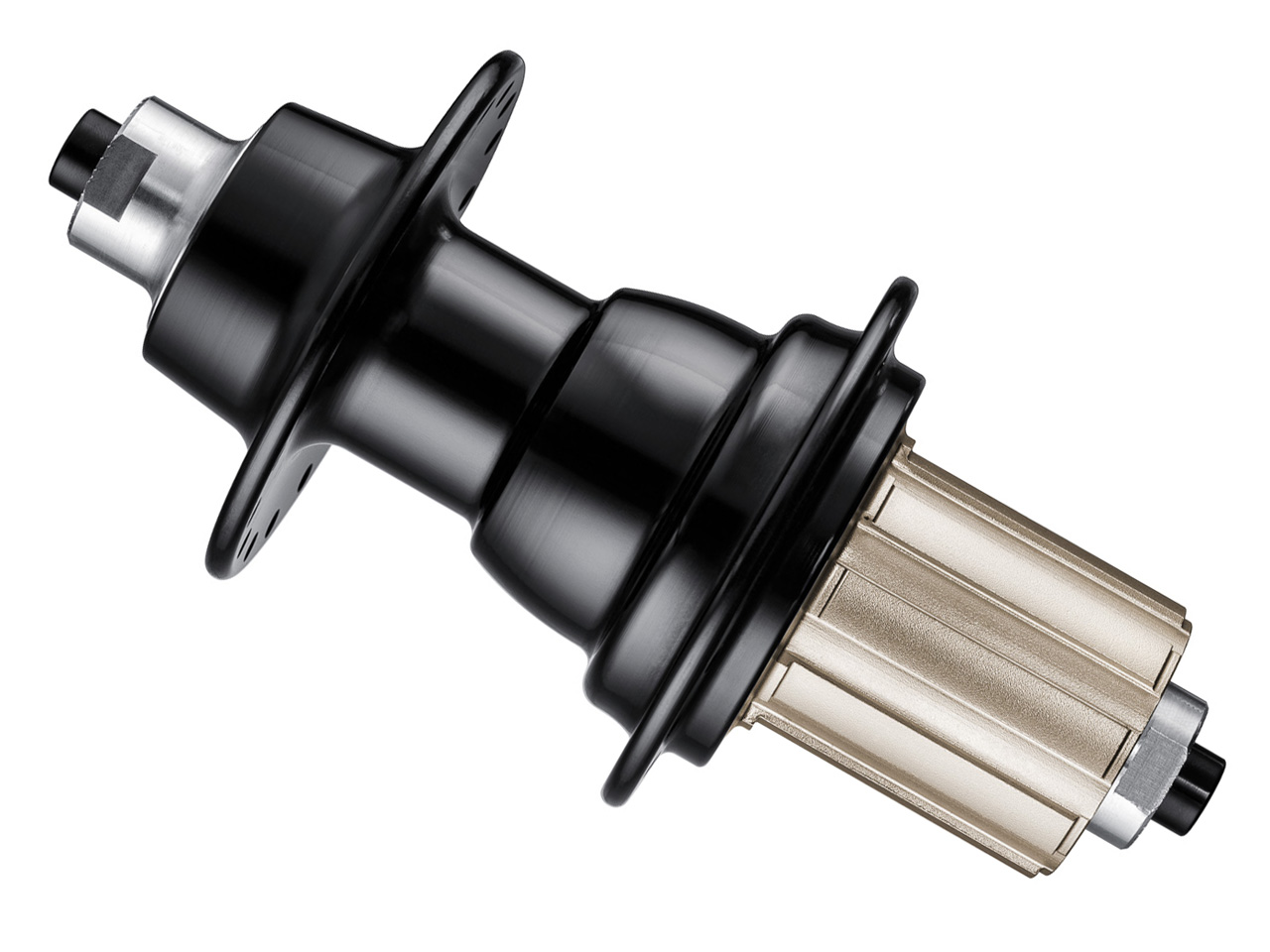No noise, no lag, no drag…

“Like a super-car– hit the gas and you’re off.”
Like straight pipes on motorbikes, loud freehubs on bikes are polarising. On the one hand is the look at meeee! advance warning crowd; on the other those who want an undiluted outdoor experience. But both both camps can appreciate durability and quick engagement in technical or dicey situations.
Perhaps in reaction to the recent trend toward noisy freehubs, we are seeing a resurgence in the idea of roller clutch hubs. “Quiet as a church mouse,” the hubs use a set of rollers (not unlike those in SRAM’s Type 2 derailleurs) to transfer power without pawls or the clicks those bring. Efneo’s Active Hub is the freshest of this new crop.

Because its rollers spin with the outer engagement ring, Efneo claim that their hubs coast without the friction inherent in pawl or lesser roller clutch designs. The claimed sub-one-degree takeup is as close to instant as one is likely to find. Because the rollers aren’t continuously running against their engagement ring, Efneo’s mechanism is also said to be much more resistant to wear and degradation than other silent hubs on the market.
From Efneo:
How it works
For years the industry has been seeking a way to use another type of freewheel mechanism – the so called “silent hub” – using a concept of a roller freewheel.
This kind of hub has two major features – it engages immediately and does not make any noise – unlike all pawl and ratchet freewheels with their specific bee-like sound and inefficient rotation of the freewheel before it engages and applies power to the wheel.

After a relatively short time they are worn-out and do not engage effectively when a cyclist pushes hard on his pedals. They “slide”. They all work perfectly when they are brand new from the factory but get “old” and weak very quickly.
Efneo freewheel works differently when not pedaling. The rollers are not grinding at all so the rollers do not wear out nearly as quickly as other roller freewheels did. And since the rollers are not grinding, they do not have to be made so heavy in order to continue to function properly for a very long time. Thus, efneo has invented a new freewheel that is much more efficient than the 19th century pawl-and-ratchet system and is just as durable and lightweight as the pawl-and-ratchet freewheels with the added benefit by using rollers that do not grind when not pedaling, eliminating that noisy, annoying ratcheting sound.
Comments (13)
Leave Reply
Post Comment


From their website: “Active Hub is about 50-100 grams heavier than traditional hubs of the same class.”
So it’s not as “lightweight as the pawl-and-ratchet freewheels”. Realise you’ve just used their words.
Heaven forbid they used a Hope hub hub as the “in the same class” bench mark. 100g on top of a hope and it’ll feel really heavy.
To be honest, it sounds really good.
But deviating from tried and tested hub options feels like a risk. We all know where we are with Hope/DT/CK etc.
TBH, i don’t think they have particularly “invented” one way roller clutches though. You just buy them off the shelf, just like bearings………
(ramp driven roller clutches are used throughout many industrial applications such as driving machinery, or for free wheeling applications on vehicles etc etc)
So what type is a Shimano XT hub? They seem very quiet compared to a Hope one.
How well will it stand upto high torques? ie big units and/or SS use?
Typical of input from groups who don’t know the industry – a solution to a problem that doesn’t really exist. As maxtorque pointed out – the technology isn’t new, and if there had been a real demand for something like this, they’d have got here years ago. In fact did Shimano not already try it in the late 90’s on LX hubs? Looks like they still do too on Nexus, etc. Looks like they did their research…..
“In fact did Shimano not already try it in the late 90′s on LX hubs?” yeah but they were reet heavy lumps whereas these are…oh.
But seriously lets wait and see, if they turn out to be really reliable, fit and forget units with a slight weight penalty then I’m all for quiet hubs. If they turn out to be only as good as current options then, clickety clack, I’ll stick with what I know.
Wasn’t it the STX hub, cx_monkey? I remember them. Quite heavy, I recall.
Cane Creek did one too – very impressive to ride, the instant takeup was a far bigger selling point than the lack of click, but I don’t think they held up to mega-high torque as well.
It would be good to see the long term durability and useability, rather than posh marketing video’s….Please hand a hub or two to the STW team and leave them to grind….
I had one of those shimano hubs – LX IIRC, and it weighed a ton…
Sounds like some independent real-world testing is needed.
The machine tech hub (off of about 1995) was a silent clutch model. I had one and it was amazing. The best bit was that it was serviceable with virtually no tools. Which was quite a unique thing back then.
I love the idea of a silent freehub and the bonus of instant pick-up. If this is a generic solution then I suppose we can hope to see some alternatives coming.
any word on price?
any word on just what they were thinking when they decided to make a mtb hub with no disc mount in this, the 21st century?